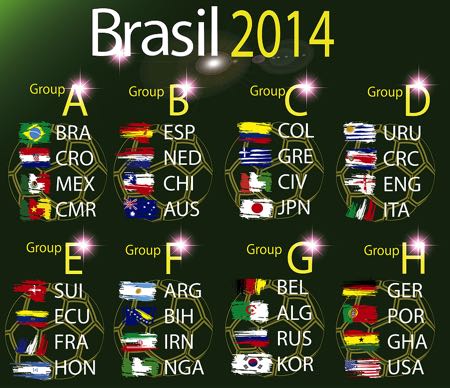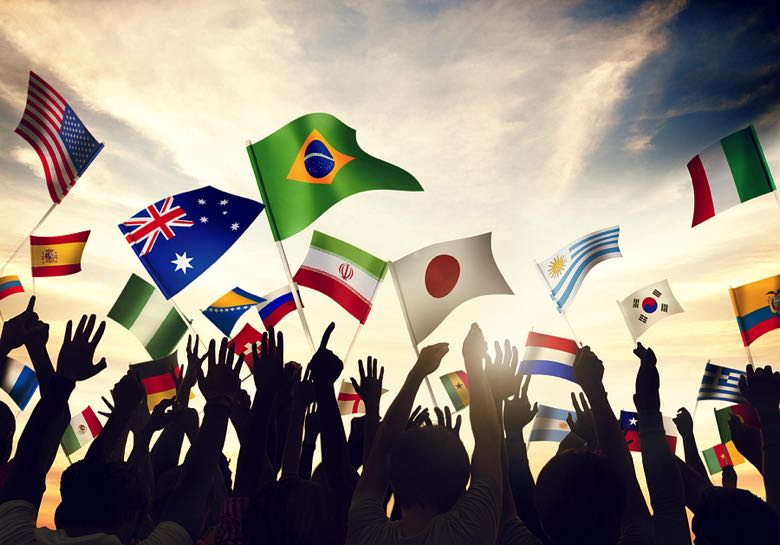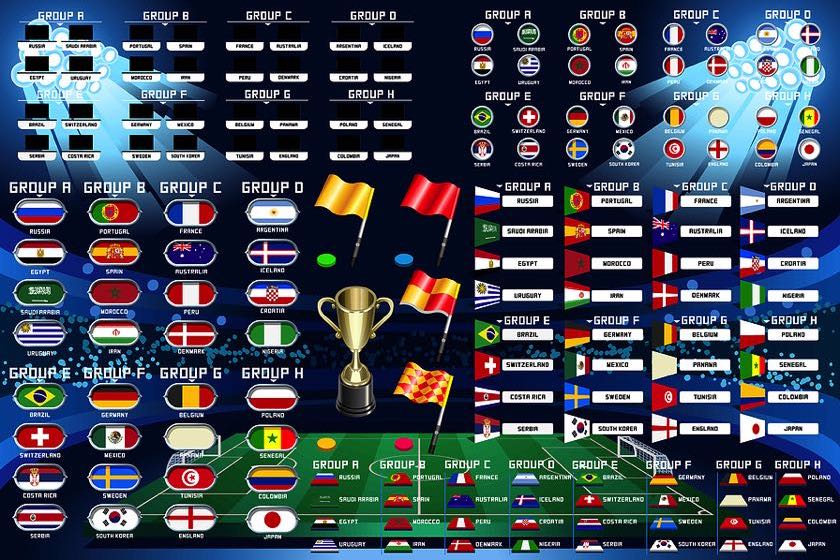There’s a lot of pomp and circumstance – and nonsense, it has to be said – that goes into performing the draw for major football tournaments these days. Lights! Music! Theatre! Governing body delegates slightly out of their depth in presenting the action! It’s a lot of faff over something that used to be conducted with little more than two people and a bag of numbered balls.
Even so, there’s a lot at stake in these draws. The seeded teams know that they should have a charmed group, but there’s often outliers and anomalies that mean that at least one group in a tournament will be almost impossible to call. This is the ‘group of death’.
What Are Groups of Death?
 Group of Death – it sounds like some sort of football-based Hollywood movie starring Denzel Washington as a maverick cop going undercover at FIFA. In reality, it’s a simple phrase used to explain a group that, on paper at least, looks incredibly tough – with three or perhaps even all four of the teams involved evenly-matched and capable of beating each other.
Group of Death – it sounds like some sort of football-based Hollywood movie starring Denzel Washington as a maverick cop going undercover at FIFA. In reality, it’s a simple phrase used to explain a group that, on paper at least, looks incredibly tough – with three or perhaps even all four of the teams involved evenly-matched and capable of beating each other.
Although tournament formats seem to be ever-changing, historically they’ve used four teams to a group – with only the top two progressing to the knockout phase of the competition. Hence the ‘group of death’ phrasing, as it means that at least one high-class team will be sent packing at the earliest possible stage.
Other times, there may be three strong teams and one also-ran – the Scottish press used the term ‘Group of Certain Death’ to illustrate Scotland’s chances in Group B of Euro 1992, which also included Germany, the Netherlands and CIS (the forerunner to Russia).
The term is adapted for use in other ways. Sometimes, when one of the teams is of a much higher quality than the others, Group of Death is used to explain the travails of the other three – typically, only one of them will join the favourite in the next round.
Formats have changed, in some cases, in a bid to ward off the evils of the Group of Death. Take Euro 2024, for example. Drawn together in Group B are Spain, multiple-time European and World Cup champions; Italy, the defending European Championship victors and Croatia, who reached the final and semi-finals of World Cups 2018 and 2022, respectively.
Once upon a time, only two of that triumvirate would have made it to the knockout phase – now, after UEFA’s meddling with the format, the four teams that finish in third place in their respective groups with the most points also progress to the Round of 16. Why? Because tournament officials want to minimise the damage caused by the Group of Death scenario.
How Does Tournament Seeding Work?

In a bid to protect the best teams – and ensure as many of them as possible make it to the business end of a tournament – officials have come up with a seeding system that should achieve exactly that….and try to eliminate the threat of a Group of Death being drawn.
For European Championships and World Cups, the teams that qualify with the most points are generally seeded in Pot 1 or Pot 2 – meaning that they will be paired with nations from the lower-ranked pots; thus affording them preferential treatment.
However, the seeding system only works in this regard when the most revered teams qualify in impressive fashion – when they don’t, and underdogs shine, it undermines everything tournament officials are trying to achieve.
Hence why we have situations like Group B at Euro 2024. Spain topped their qualification group with consummate ease – hence their placement in Pot 1. But Croatia finished second behind Turkey in theirs, seeing them in Pot 2, while Italy’s woes – they only squeezed through their group via goal difference – saw them chucked into Pot 3.
And, well, it was bad luck for the trio as they were drawn together, along with Albania. The seeding system is supposed to minimise the risk of this Group of Death scenario – but it only works when the so-called ‘best’ teams live up to their moniker and qualify in supreme fashion.
Famous Groups of Death in Football

For our money, the true definition of a Group of Death is one in which at least one high-quality team is bound to be eliminated from the tournament. The term was first popularised during the World Cup of 1986, when West Germany, Uruguay, Denmark and Scotland were drawn together, leaving Uruguayan head coach Omar Borras to bemoan his team’s lack of luck in the draw – ‘El Grupo de la Muerte’, he termed it.
But that’s not a true Group of Death, because at least two of the teams in it (sorry Scotland and Denmark) were neither highly-ranked nor highly-regarded at the time. Instead, Group C of the 1982 World Cup perhaps takes the honour as the most spiteful Group of Death in tournament football history. Back then, there were only three teams in each – with just the side with the most points progressing to the knockout phase. So imagine the blushes at FIFA when defending champions Argentina were paired with pre-tournament favourites Italy and the perennially-fancied Brazil.
Two would be facing the earliest possible exit from the World Cup… in the end, it was Brazil and Argentina that suffered the unenviable fate. There’s plenty of other worthy contenders too. How about if the reigning world champions and a former finalist were drawn together with the favourite for the current edition? That’s what happened in Group 3 of the 1970 World Cup, where defending champions England, 1962 finalists Czech Republic and pre-event jolly Brazil were paired with Romania.
England and Brazil would progress, with the former losing to (who else?) Germany in the quarter-finals and the latter going on to lift the Jules Rimet Trophy, defeating Italy 4-1 in the final. If you wanted to get technical about it, you might argue that Group B at Euro 2012 was the greatest Group of Death in history.
Why? Because all four of its teams – Germany, the Netherlands, Portugal and Denmark – were located in the top-10 of FIFA’s world rankings, with the sides ranked second, fourth, fifth and tenth respectively as per the standings. The fourth best team in the world, Holland, would exit the tournament at the first phase alongside Denmark.

